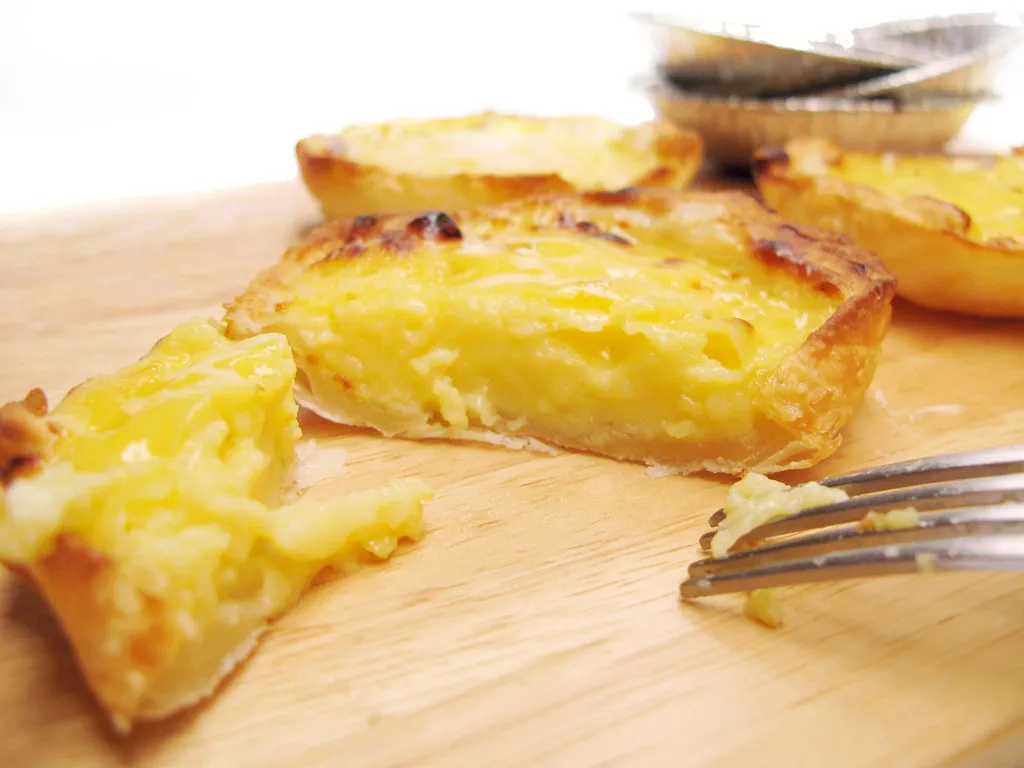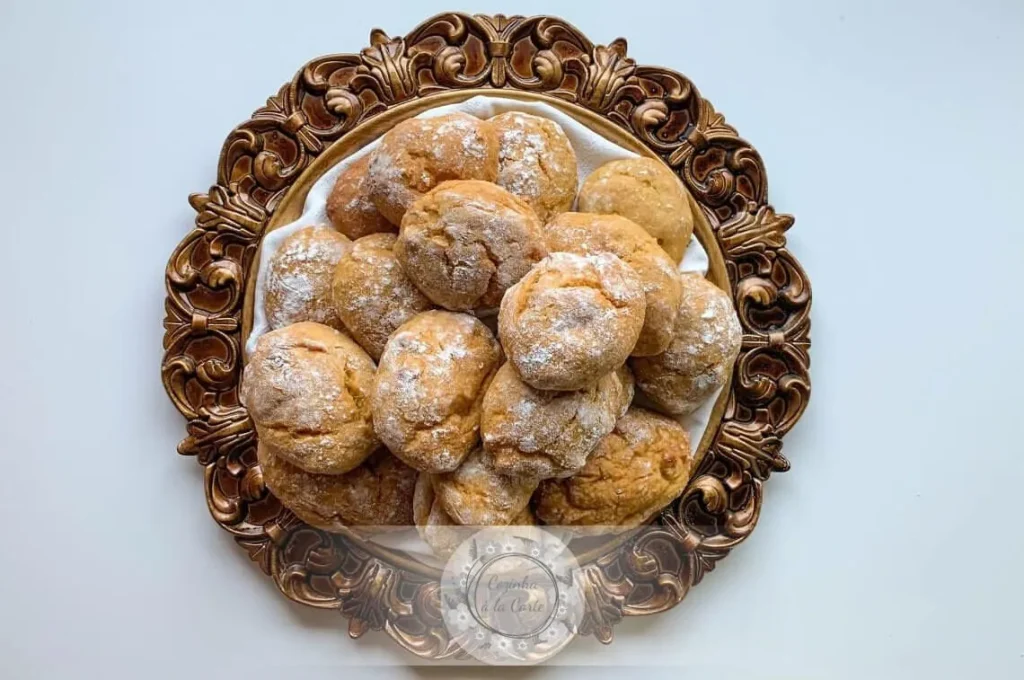The Best Fluffy Pancakes recipe you will fall in love with. Full of tips and tricks to help you make the best pancakes.
When it comes to breakfast, Portugal offers a deliciously simple yet rich tradition centered around fresh pastries and strong coffee. From the flaky, caramelized layers of the famous Pastéis de Nata to the soft, coconut-topped Pão de Deus, Portuguese mornings are sweet, comforting, and full of flavor. In this post, we’ll dive into the world of Portuguese breakfast pastries, showing you how to make some of the most iconic treats at home. Whether you’re dreaming of a quiet Lisbon café or planning a brunch with a twist, these recipes and tips will bring a taste of Portugal to your kitchen.
A Taste of Portugal in the Morning
Breakfast in Portugal is not about elaborate meals or heavy dishes—it’s about simple pleasures enjoyed slowly, often at a local café. While in many countries breakfast might include eggs, bacon, or cereals, the Portuguese prefer something lighter, typically sweet or lightly savory pastries paired with strong coffee.
A Light and Flavorful Start
The most common way to start the day in Portugal is with a pastel (pastry) and a bica, Portugal’s answer to a strong espresso. For those who prefer something milder, a galão—similar to a latte, with more milk—is a popular choice. Alongside this, you’ll often find locals enjoying a buttery croissant, a slice of sweet bread like Pão de Deus, or a warm pastel de nata straight from the oven.
The Role of the Café
Unlike in other cultures where breakfast is eaten at home, many Portuguese people begin their day at the café. It’s not just about the food—it’s a ritual. The café acts as a community space where locals gather, read the newspaper, greet the barista by name, and chat briefly before heading off to work. It’s all about comfort, routine, and connection.
Simple Ingredients, Deep Tradition
Portuguese breakfast pastries are often made with humble ingredients—eggs, flour, sugar, butter, and sometimes coconut or cinnamon. Yet, through tradition and technique, these elements come together to create flavors that are both delicate and deeply satisfying. Whether it’s the flaky crust of a pastel de nata or the pillowy texture of sweet bread, every bite tells a story of generations past.
Morning Flavors with a Coastal Influence
Portugal’s coastal location also brings a Mediterranean influence to its cuisine—even at breakfast. You’ll often find pastries subtly infused with citrus zest or topped with almonds, ingredients that reflect the region’s climate and heritage. Even the coffee has a uniquely bold, slightly smoky flavor, often made from a dark roast blend that’s distinctively Portuguese.
Pastéis de Nata – The Iconic Custard Tart
No discussion of Portuguese breakfast pastries would be complete without the legendary Pastéis de Nata, also known as Portuguese custard tarts. With their crispy, golden puff pastry shell and creamy, caramelized custard center, these small tarts have become one of Portugal’s most beloved exports—and an essential part of the country’s morning ritual.

A Pastry Born in Monasteries
The origins of Pastéis de Nata date back to the 18th century, in the Jerónimos Monastery in Belém, Lisbon. Monks and nuns used egg whites to starch clothes, leaving them with a surplus of egg yolks. To avoid waste, they used the yolks to make rich desserts, including this now-iconic tart. When the monastery closed in the 1820s, the recipe was sold to a sugar refinery—leading to the opening of the famous Pastéis de Belém bakery, where the original version is still served today.
What Makes Them So Special?
The magic of Pastéis de Nata lies in the contrast of textures and flavors. The base is a flaky, buttery puff pastry that crackles with every bite. The filling is a smooth, lightly sweet egg custard, infused with vanilla, and sometimes accented by lemon zest or cinnamon. The tops are browned in a hot oven until they blister, giving that signature caramelized finish that resembles crème brûlée.
Key Ingredients You’ll Need
To make authentic Pastéis de Nata at home, you’ll need just a few simple ingredients:
- Puff pastry (store-bought or homemade)
- Egg yolks
- Whole milk
- Sugar
- Cornstarch or flour (for thickening)
- Vanilla extract or vanilla bean
- Lemon peel or cinnamon stick (optional for flavor)
The process involves cooking a custard until thickened, pouring it into pastry-lined tins, and baking at a very high temperature (around 250°C/480°F) to get that iconic browned top.
Tips for Making Them at Home
- Chill your puff pastry before working with it to keep the layers distinct and flaky.
- Roll it tightly into a log and slice before pressing into muffin tins to mimic the spiral structure seen in traditional bakeries.
- Bake in a metal muffin pan, which heats evenly and helps achieve a crisp base.
- Let the tarts cool slightly before serving, but they’re best eaten warm with a light dusting of powdered sugar or cinnamon.
A Global Sensation
Today, Pastéis de Nata are enjoyed not just in Portugal, but around the world—from Macau and Brazil to London and New York. Yet, there’s nothing quite like tasting one fresh from a Lisbon café, with its creamy center still warm and the pastry delicately shattering beneath your bite.
Other Classic Portuguese Breakfast Pastries to Try
While Pastéis de Nata may be the most internationally famous, Portuguese cafés and bakeries offer a tempting variety of morning pastries that deserve their own spotlight. From coconut-covered brioche buns to custard-filled doughnuts, each treat is a delicious reflection of Portugal’s rich baking traditions. Below are four iconic pastries you can try at home—with recipe details and preparation tips.

🥥 1. Pão de Deus (God’s Bread)
A sweet, pillowy brioche bun topped with a coconut-egg mixture that bakes into a golden, chewy crown.
Ingredients:
- 3 cups all-purpose flour
- 1/4 cup sugar
- 2 tsp active dry yeast
- 3/4 cup warm milk
- 2 eggs (1 for dough, 1 for egg wash)
- 1/4 cup butter, softened
- 1/2 tsp salt
Topping:
- 1 cup shredded coconut
- 1/4 cup sugar
- 1 egg yolk
- 1 tbsp milk
Instructions:
- Dissolve yeast in warm milk; let it sit for 5–10 minutes until foamy.
- Combine flour, sugar, and salt in a large bowl. Add in the milk/yeast mixture, 1 egg, and softened butter.
- Knead for 10–15 minutes until smooth. Cover and let rise for 1–1.5 hours.
- Shape into round buns, place on a baking tray, and let rise again for 30 minutes.
- Mix topping ingredients and spoon over each bun. Brush exposed dough with egg wash.
- Bake at 375°F (190°C) for 20–25 minutes until golden brown.
🍩 2. Bola de Berlim (Portuguese Custard Doughnut)
A fried doughnut filled with luscious pastry cream—like a softer, creamier cousin to the Berliner.
Dough Ingredients:
- 3 cups all-purpose flour
- 1/4 cup sugar
- 1 packet active dry yeast
- 3/4 cup warm milk
- 2 eggs
- 3 tbsp butter
- Zest of 1 lemon
- Pinch of salt
Pastry Cream Filling:
- 1 1/4 cups milk
- 3 egg yolks
- 1/3 cup sugar
- 2 tbsp cornstarch
- 1 tsp vanilla extract
Instructions:
- Mix yeast, warm milk, and a pinch of sugar. Let it bloom.
- In a bowl, mix flour, sugar, lemon zest, and salt. Add eggs, butter, and yeast mixture.
- Knead until smooth, cover, and let rise for 1 hour.
- Roll out and cut into circles. Let them rise again for 30–45 minutes.
- Deep fry in hot oil until golden brown on both sides. Drain on paper towels.
- Whisk all pastry cream ingredients in a saucepan over medium heat until thick. Cool completely.
- Slice doughnuts and fill with cream. Dust with sugar.
🍰 3. Mil Folhas (Portuguese Mille-Feuille)
A Portuguese version of the French classic with puff pastry layers and thick custard, often served as a decadent breakfast pastry.
Ingredients:
- 2 sheets puff pastry (store-bought or homemade)
- 2 cups whole milk
- 4 egg yolks
- 1/2 cup sugar
- 1/4 cup cornstarch
- 1 tsp vanilla extract
Icing (optional):
- 1 cup powdered sugar
- 1–2 tbsp milk
- Optional chocolate drizzle for design
Instructions:
- Bake puff pastry sheets until golden (400°F / 200°C for ~15 minutes). Let cool.
- Whisk yolks, sugar, cornstarch, and a bit of milk in a saucepan.
- Gradually add the rest of the milk and cook until thick. Add vanilla.
- Layer pastry and custard: pastry-custard-pastry-custard, topping with final pastry sheet.
- Mix icing and spread over the top. Decorate with chocolate if desired.
- Chill for at least 1 hour before slicing.
🌰 4. Tarte de Amêndoa (Portuguese Almond Tart)
A buttery shortcrust tart topped with a rich caramel-almond topping—simple and elegant for breakfast or brunch.
Ingredients:
- 1 cup all-purpose flour
- 1/2 cup sugar
- 1 egg
- 1/4 cup butter, softened
- Pinch of salt
Topping:
- 1/2 cup sliced almonds
- 1/4 cup butter
- 1/4 cup sugar
- 2 tbsp milk
- 1 tbsp honey
Instructions:
- Mix flour, sugar, salt, egg, and butter to form a dough. Press into a tart pan and chill for 20 minutes.
- Pre-bake crust at 350°F (175°C) for 10–12 minutes.
- In a saucepan, heat all topping ingredients until bubbling.
- Pour almond topping over crust and bake for another 15–20 minutes until golden.
- Let cool before slicing. Serve with coffee or tea.
Baking Tips for Authentic Flavor and Texture
The charm of Portuguese breakfast pastries lies in their delicate textures, subtle flavors, and beautifully golden finishes. Whether you’re making Pastéis de Nata or fluffy Pão de Deus, following a few expert techniques can take your homemade pastries from good to truly authentic. Below are key tips to ensure your creations taste like they came straight from a Lisbon pastelaria.
🥐 Use Quality Puff Pastry (or Make Your Own)
For pastries like Pastéis de Nata or Mil Folhas, the flakiness of the crust is everything.
- If you’re using store-bought puff pastry, choose a butter-based version—it delivers better flavor and crispness than those made with shortening or oil.
- For the ambitious baker, homemade puff pastry gives the best results. Just make sure to chill your dough between each fold to preserve those crucial layers.
Pro tip: When using puff pastry for custard tarts, roll it into a log and slice it before pressing into muffin tins—this mimics the spiral pattern traditional to Pastéis de Nata.
🥚 Focus on Egg Yolks for Creaminess
Portuguese custards rely heavily on egg yolks for their richness and golden hue.
- Use fresh, high-quality yolks—the brighter the yolk, the deeper the color of your filling.
- Temper the eggs carefully when adding hot milk to avoid curdling.
- Stir constantly while cooking the custard to ensure a smooth, lump-free texture.
For added depth, infuse your milk with lemon peel, cinnamon stick, or a vanilla bean before combining it with the eggs.
🔥 Master High-Heat Baking
Many Portuguese pastries are baked at very high temperatures to create distinct textures—crispy exteriors with creamy or airy centers.
- For Pastéis de Nata, bake at around 480°F (250°C) or higher to achieve the classic caramelized blistered top.
- Preheat your oven thoroughly and use a metal muffin tin for the best heat conduction.
- For soft brioche like Pão de Deus, opt for 375°F (190°C) and bake until the topping is golden and set.
🍞 Let Your Dough Rise (but Not Too Much)
For yeasted pastries like Pão de Deus or Bola de Berlim, the dough should be soft and airy but not over-proofed.
- Allow the dough to rise until doubled in size, but not so much that it collapses when shaped.
- If your kitchen is cold, create a warm environment by placing the dough in the oven with just the light on or next to a warm stove.
Kneading by hand or with a stand mixer for at least 10–15 minutes will help develop strong gluten strands, resulting in a fluffier texture.
🌡️ Storage and Reheating Tips
Fresh is best, but many Portuguese pastries can be stored and revived with care:
- Pastéis de Nata: Best eaten the same day but can be stored in the fridge for up to 2 days. Reheat at 350°F (175°C) for 5–8 minutes to restore crispness.
- Pão de Deus and brioche-style buns: Wrap in foil or store in an airtight container. Lightly toast or microwave before serving.
- Custard-filled pastries: Keep refrigerated and consume within 2–3 days. Avoid reheating the cream-filled portions.
👨🍳 Bonus Tip: Authentic Presentation
To truly capture the Portuguese breakfast experience, serve your pastries with a side of café culture:
- Galão (Portuguese latte) or bica (espresso) in a small ceramic cup
- A sprinkle of cinnamon or powdered sugar
- A lace doily or small paper napkin, just like in Lisbon cafés
How to Serve a Portuguese Breakfast at Home
Bringing the warm charm of a Portuguese breakfast into your own kitchen is all about combining simple ingredients, cozy ambiance, and thoughtful presentation. Whether you’re preparing a weekend brunch or a quiet morning meal, here’s how to recreate the comforting and elegant experience of a traditional Portuguese café-style breakfast.
🥐 Start with a Beautiful Pastry Selection
The centerpiece of any Portuguese breakfast is a small assortment of pastries—usually sweet, sometimes lightly savory. Offer variety by serving a selection of freshly baked or homemade favorites, such as:
- Pastéis de Nata: Serve slightly warm with a dusting of cinnamon or powdered sugar.
- Pão de Deus: Perfect sliced in half with a bit of butter or jam.
- Bola de Berlim: Best served fresh with custard filling peeking out.
- Sweet bread or croissants: Lightly toasted and spread with queijo fresco (Portuguese fresh cheese) or butter.
Arrange the pastries on a wooden board or ceramic platter for a rustic and authentic look.
☕ Don’t Forget the Coffee
In Portugal, coffee is an essential part of the morning routine. Offer your guests a couple of options to mirror what’s typically available in cafés:
- Bica: A strong, espresso-style coffee shot served in a small cup.
- Galão: A 1:3 ratio of espresso to steamed milk, served in a tall glass—Portugal’s version of a latte.
- Meia de leite: Half coffee, half milk, served in a large cup or mug.
If you don’t have an espresso machine, a strong stovetop Moka pot brew works perfectly. Add warm frothed milk for the galão.
👉 For an easy, authentic experience at home, try the Ninja Espresso & Cappuccino Maker with Hands-Free Frother.
It’s perfect for preparing authentic Portuguese-style coffee drinks with minimal effort—just like in a Lisbon café.
🍯 Include Sweet and Savory Accompaniments
A Portuguese breakfast may be sweet-heavy, but there’s always room for simple accompaniments to balance the meal.
- Fresh cheese (queijo fresco) with a sprinkle of salt and olive oil
- Cured meats, like presunto (Portuguese prosciutto) or chouriço
- Fruit jam, especially fig or apricot
- A small bowl of seasonal fruit, like oranges, melon, or grapes
- Optional: a drizzle of Portuguese honey over toasted bread
These additions elevate the breakfast spread and give your guests more variety without complicating the prep.
🏠 Create a Cozy Portuguese Café Vibe
The presentation and setting matter just as much as the food. With a few thoughtful touches, you can bring the atmosphere of a Lisbon café into your own home.
- Use ceramic plates or vintage-style saucers for serving pastries
- Offer linen napkins, and set the table with a small vase of fresh flowers
- Put on soft Portuguese music (like fado or acoustic guitar) for an ambient touch
- Brew your coffee strong and serve in small espresso cups or glass galão mugs
For an extra dose of authenticity, serve breakfast outdoors if the weather allows—just like locals do on a sunny café terrace.
🍽️ Bonus: Make It a Brunch Spread
If you’re hosting guests or making a weekend treat, turn your Portuguese breakfast into a mini brunch buffet:
- Offer multiple types of pastries (store-bought and homemade)
- Add boiled eggs, cheeses, and fruit
- Serve orange juice or even a splash of port wine or sparkling vinho verde for a festive twist
With a little planning, a Portuguese breakfast at home can be both comforting and elegant, whether you’re enjoying a quiet moment alone or sharing it with family and friends.





